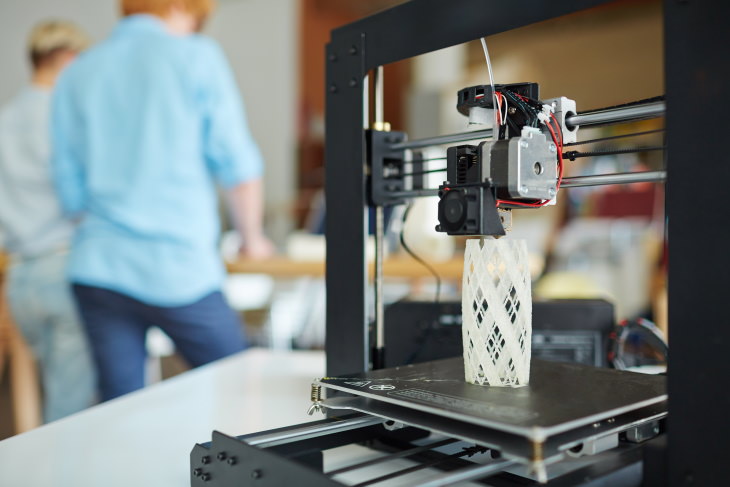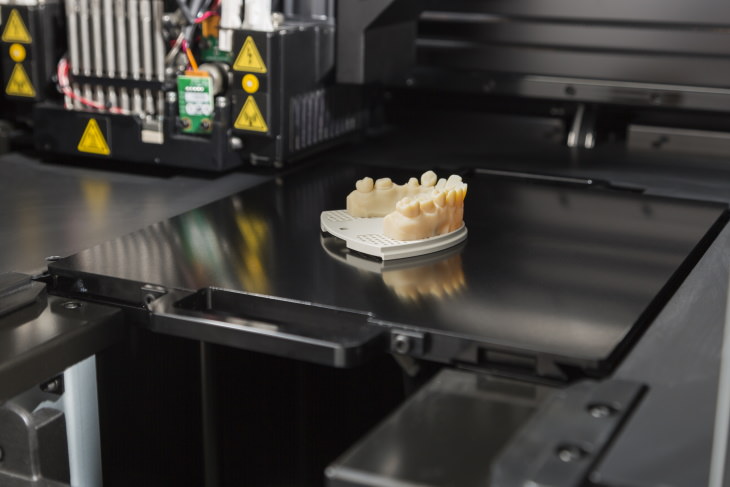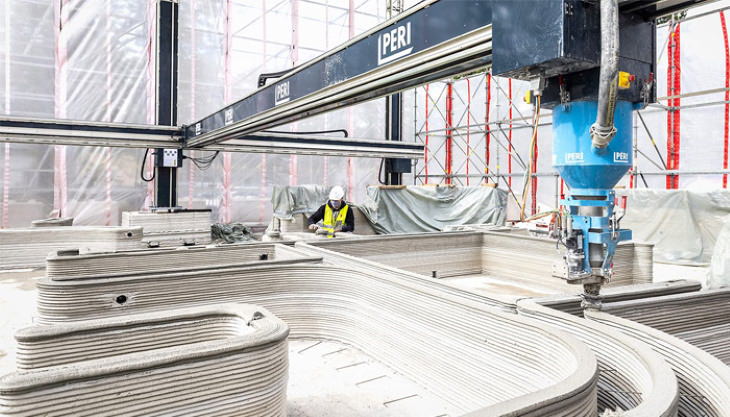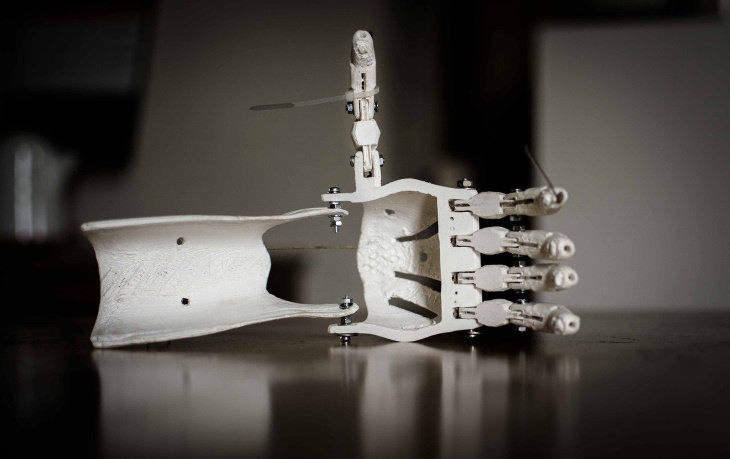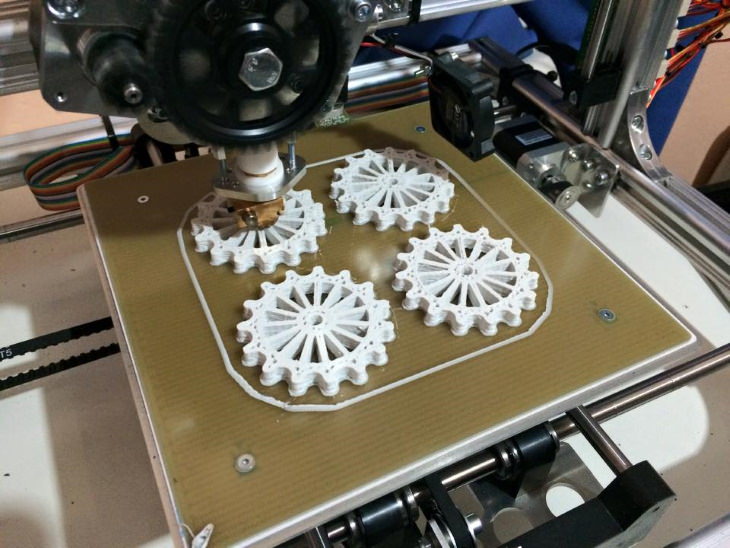It all began in 1986 when engineer Chuck Hull printed a small cup using a technology called stereolithography. This was the first 3D printer. In the 36 years of its existence, this technology has really evolved and is now allowing us to build any plastic, metal, or biodegradable object faster, more efficiently, and with much less waste than before.
These machines work by printing out a shape preprogrammed by a computer, be it a scanned image of an already existing object, or a completely novel digital design. This, in turn, means that 3D printers allow engineers to create novel, never before seen shapes, too. In the past few years, 3D printers have grown to a massive size, and today, it’s possible to print anything from spare parts and tools at home to entire houses with these devices.
Though practical and important, houses and missing parts are by no means the greatest achievement of 3D printers. In fact, scientists have been creating prosthetics, synthetic food, and have started playing with the idea of creating human tissues and organs using these machines. As the 3D printing market is growing and specializing, these machines are becoming easy to incorporate in the manufacturing process of various products. Here are 5 fields that have already evolved beyond belief thanks to 3D printers.
1. The Food Industry
Can you imagine a world in which 3D-printed plant-based meats are sold in the supermarket? Or that you could have a homemade pasta- or chocolate printer that allows you to create any shape you want as just another kitchen appliance? This may soon be the reality, as synthetically printed meat and commercially available food printers are becoming better and better.
Several companies, such as Modern Meadow, Novameat, and Redefine Meat are already in the process of producing plant-based meat alternatives, for example, and with great success. These meat alternatives aren’t just much healthier than red meat, they’re also significantly eco-friendlier, not to mention cheaper. In the video above, you can see some of these products and their development process.
But the real question is, would you be willing to taste a 3D-printed burger patty?
2. Medicine
Stating that the creation of synthetic organs and tissues will become the next greatest breakthrough in medicine is no exaggeration. Well, it seems like 3D printers might just be able to speed up that process considerably. The idea is that doctors will soon be able to create individual lab-grown tissues and organs that will easily adapt to a person’s physiology and will never be rejected.
Needless to say, the uses of this technology are boundless and it might as well eliminate the need to wait for transplants and save countless lives. Though we are still a long way to be able to print entire organs, scientists at Tel Aviv University in Israel already managed to create the first-ever human heart copy using a 3D printer and human cells. As of now, the researchers learned how to print only a mini version of the heart, but it does share many of the structural and functional elements of a real human heart.
Other organs and tissue prototypes that have already been printed in a lab setting were corneas, ears, and even a functioning kidney.
3. Housing
Another field that is rapidly starting to incorporate 3D printing into its practices is the housing industry. For example, in 2017, a residential home was printed in just 24 hours for about $10,000. So, for countries with a housing issue, 3D-printed homes may be the solution. More recently, 3D-printed houses have passed another important milestone - regulation.
Although we have seen entire printed homes for years now, they were mainly prototypes that do not meet the strict building regulations present in every country. Earlier this year, the German building company Peri completed the first-ever functioning residential family building that has been completely 3D-printed. To see more about this incredible breakthrough, click here - A 3D Printed HOUSE - Incredible!
4. Custom Production
Another practical way in which 3D-printing may transform our everyday lives is through shifting the market, be it the production of vehicles, clothing, footwear, and even custom prosthetics to less wasteful on-demand orders. Apart from eliminating excess production and helping cut costs and emissions as seen in companies that have already embraced 3D printing like the airplane company Airbus, for example, there is a more practical advantage of 3D printing for the everyday consumer, too, which we will illustrate on the example of apparel.
Are you in-between shoe or clothing sizes and never seem to find an item that really fits? Well, on-demand 3D printing will allow everyone to always wear their perfect size, as every item will be manufactured, i.e. printed, individually, so customers will be able to fit each model of shoes or clothing to their measurements and preferences.
And if that doesn’t sound good enough, we can also point out that 3D-printed shoes and clothing will likely be more eco-friendly, too, and Adidas already has a model of their sneakers in the works that will be fully made of polyurethane, and hence, 100% recyclable.
5. Home Repairs
We’ve all been in the situation where we were forced to replace an old household item like an air conditioner or a dishwasher completely just because the part that broke was no longer manufactured or sold in stores. 3D printing will be able to solve that problem, too, as by having a smaller household printer, you will be able to repair and replace missing parts by simply printing new ones.
Though this way of using 3D printers is less impactful on a global scale, it will be able to make your life a lot easier and allow you to save money and customize your home in whichever way you want.
Share this article with those who love novel tech!

